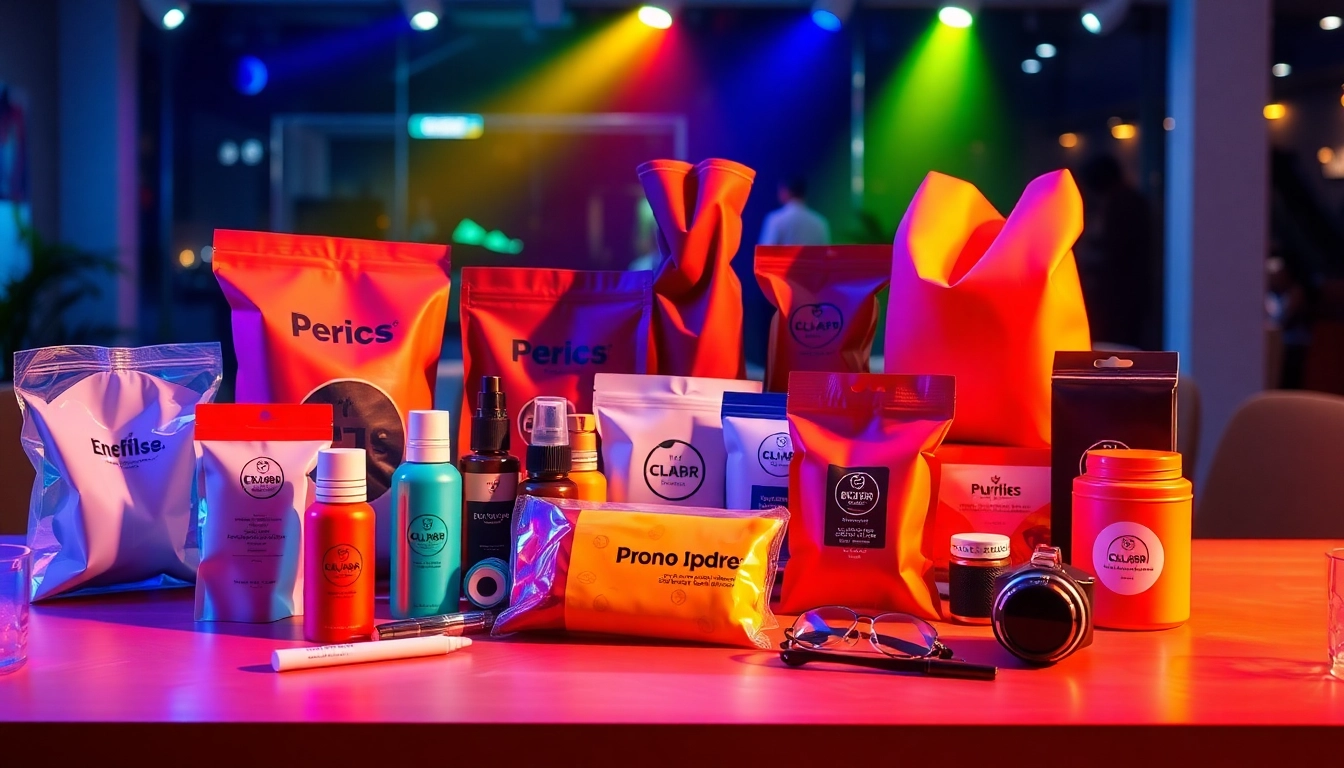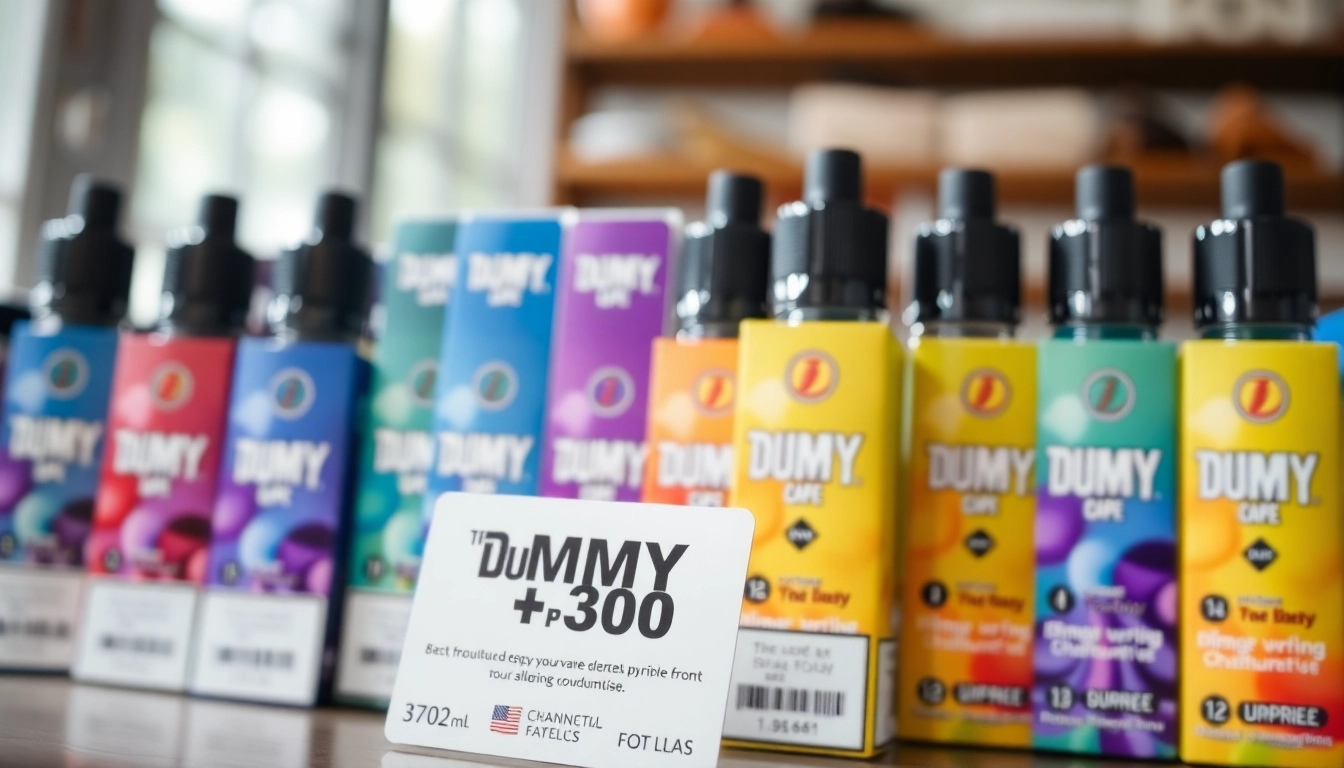Understanding Promotional Products and Their Benefits
Promotional products have become an essential tool for businesses aiming to enhance their visibility and engage with both current and prospective customers. Utilizing promotional products not only fosters brand recognition but also contributes significantly to revenue growth. In this section, we will explore what promotional products are, their impact on brand recognition, and how to choose products that resonate with your audience.
What Are Promotional Products?
Promotional products are tangible items imprinted with a company’s logo, message, or brand name, designed to promote a business, product, or service. They can take numerous forms—including pens, mugs, apparel, bags, and tech gadgets—serving as effective marketing tools. The primary objective is to create memorable moments that resonate with consumers, capitalizing on the psychological association between the product and the brand it represents. Thanks to their utility, these products often remain in the hands of customers, ensuring long-lasting exposure.
The Impact of Promotional Products on Brand Recognition
Brand recognition is crucial in today’s competitive landscape, and promotional products can significantly enhance a brand’s visibility. Studies have shown that nearly 79% of people can recall the branding on a promotional product they received in the past two years. By providing quality items that are both functional and aesthetically pleasing, businesses can forge stronger connections with their audience. Additionally, these products are often shared among peers, further amplifying brand exposure across social circles—a phenomenon known as “word-of-mouth marketing.”
Choosing the Right Promotional Products for Your Audience
Selecting promotional products requires a comprehensive understanding of your target audience. Factors such as demographics, preferences, and environmental consciousness come into play. For instance, tech-savvy younger consumers may prefer gadgets like USB drives or portable chargers, while older demographics might appreciate practical items like calendars or notebooks. By aligning your product choices with audience interests and needs, you can enhance their effectiveness, ensuring that the products become valued items rather than mere giveaways.
Types of Promotional Products to Consider
Common Categories of Promotional Items
The variety of promotional products available can be overwhelming, but they can generally be categorized into several common types:
- Apparel: T-shirts, hats, and jackets featuring logos.
- Office Supplies: Pens, notepads, and USB drives that people often use daily.
- Drinkware: Mugs, water bottles, and tumblers that also promote eco-friendliness.
- Bags: Tote bags, backpacks, and reusable shopping bags provide utility and visibility.
- Tech Gadgets: Items like phone holders, Bluetooth speakers, and chargers appeal to tech enthusiasts.
Each category has its unique advantages, which can be exploited through thoughtful marketing strategies.
Trends in Custom Promotional Products
Staying updated with the latest trends in promotional products ensures that your offerings remain relevant and exciting. Currently, personalization is a rising trend—consumers appreciate products that feel tailored to them. Additionally, experiential promotional products, which promote engagement and create memorable experiences, are gaining traction. For instance, brands might host events that feature interactive product demonstrations or giveaways, allowing potential customers to interact and connect with the brand on a deeper level.
Eco-Friendly Promotional Products for Sustainable Branding
As environmental consciousness grows, customers increasingly seek brands that demonstrate sustainability. Eco-friendly promotional products—such as reusable bamboo straws, recycled tote bags, and biodegradable pens—are excellent tools for brands to align themselves with eco-centric values. Additionally, these items can communicate a brand’s commitment to sustainability, appealing to environmentally aware consumers and reaching a broader audience.
Creating a Promotional Product Strategy
Defining Your Marketing Goals with Promotional Products
Establishing clear marketing goals is essential before selecting promotional products. Are you aiming to increase brand awareness, drive sales, promote a new product, or reinforce customer loyalty? Each goal will guide the choice of products, distribution methods, and campaign messaging. For example, if brand awareness is the key goal, distributing eye-catching items at trade shows or community events might be effective. Alternatively, for driving sales, products that directly complement your offerings should be prioritized.
Budgeting for Promotional Products Acquisition
Budgeting is a critical aspect of any marketing campaign, including promotional products. Assessing the overall marketing budget is an initial step, followed by estimating costs for product acquisition, customization, and distribution. Keep in mind that while it can be tempting to opt for the cheapest products, the quality of the promotional items can significantly impact their effectiveness. Investing in durable and high-quality items may yield better long-term results, as they are more likely to be kept and used by consumers.
Measuring the Effectiveness of Promotional Products in Campaigns
To gauge the success of promotional products, businesses should develop KPIs that align with their marketing goals. Metrics could include increased website traffic, social media engagement, or improvement in sales figures following a promotional campaign. Surveys can also provide insights into consumer perceptions and behaviors. Collecting feedback allows businesses to refine their strategies, ensuring continuous improvement and better alignment with consumer expectations.
Best Practices in Designing Promotional Products
Key Design Principles for Attractive Promotional Products
Effective design plays a crucial role in the success of promotional products. When creating a product, focus on simplicity, functionality, and aesthetic appeal. The design should be clean, ensuring the brand logo and message are easily readable. Additionally, incorporating ergonomic features can enhance usability, making products more attractive to consumers. Understanding color psychology can also serve as a powerful tool, as colors can evoke emotions and influence perceptions of the brand.
Choosing the Right Messaging and Branding Elements
Messaging is just as important as design when it comes to promotional products. It should reflect the brand’s values, mission, and the intended message of the campaign. The wording must be concise and impactful, often including a call to action that encourages the consumer to engage further with the brand. Consider also the integration of social media handles or QR codes to facilitate easy interaction and provide more information about your products or services.
Utilizing Technology in Promotional Product Design
With the advancement of technology, incorporating digital elements into promotional product design can enhance engagement. For example, NFC (Near Field Communication) technology enables brands to create smart promotional items that connect directly to consumers’ smartphones, providing instant access to product information, offers, or additional brand stories. This level of interactivity creates a unique experience that can significantly boost consumer interest and brand loyalty.
Case Studies of Successful Promotional Product Campaigns
Industry Examples and Success Stories
Real-life case studies illustrate the successful implementation of promotional product campaigns. One notable example is a tech company that distributed branded Bluetooth speakers during a major industry convention. The speakers were well-received, leading to increased booth traffic and a higher number of qualified leads. Such success was attributed to the product’s relevance to the target audience, high quality, and memorable branding.
Lessons Learned from Top Brands
Brands like Coca-Cola and Nike have mastered promotional product strategies. Coca-Cola’s “Share a Coke” campaign personalized beverages with consumers’ names. This sense of personalization resonated deeply, driving engagement and enhancing brand loyalty. Nike’s promotional items often align seamlessly with their athletes’ narratives, showcasing lifestyle and innovation while reinforcing the brand’s ethos. Learning from these examples reveals the importance of aligning promotional products with the brand’s identity and consumer values.
Future Trends in Promotional Products Campaigns
As the marketing landscape evolves, so too does the realm of promotional products. Anticipated trends include a shift toward personalization and customization, allowing consumers to feel a greater connection with their promotional items. Additionally, there will be an increasing focus on digital integration within physical products, enhancing user experience and engagement. Brands will need to adapt to these changes and embrace innovation to remain competitive and effective in their promotional strategies.



